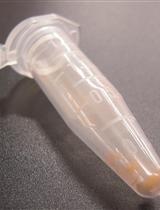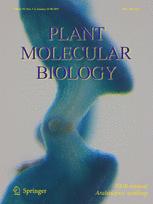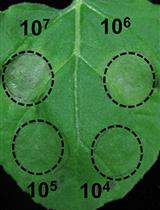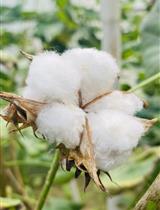- EN - English
- CN - 中文
PEG-mediated, Stable, Nuclear and Chloroplast Transformation of Cyanidioschizon merolae
PEG介导的稳定的Cyanidioschizon merolae细胞核和叶绿体转化
发布: 2019年09月05日第9卷第17期 DOI: 10.21769/BioProtoc.3355 浏览次数: 4909
评审: Dennis J NürnbergAnonymous reviewer(s)

相关实验方案

轮藻单细胞,新月藻属peracerosum-strigosum-littorale复合体的基因沉默转化子的制备
Jun Abe [...] Hiroyuki Sekimoto
2016年05月20日 9742 阅读
Abstract
The ability to achieve nuclear or chloroplast transformation in plants has been a long standing goal, especially in microalgae research. Over past years there has been only little success, but transient and stable nuclear transformation has been achieved in multiple species. Our newly developed method allows for relatively simple transformation of Cyanidioschizon merolae in both nuclear and chloroplast genome by means of homologous recombination between the genome and a transformation vector. The use of chloramphenicol resistance gene as the selectable marker allows for plate-based efficient selection of mutant colonies. Overall, the method allows the generation of mutant strains within 6 months.
Keywords: Cyanidioschizon merola (红藻)Background
Cyanidioschizon merolae 10D is a small single-cell eukaryotic red algae, that inhabits acidic hot springs. Lately, all three of its genomes were sequenced: nucleus (Matsuzaki et al., 2004), mitochondrion (Ohta et al., 1998), and plastid (Ohta et al., 2003). Its simple cell anatomy, the presence of a single mitochondrion and chloroplast, a highly reduced spliceosome (Stark et al., 2015), almost deprived of introns nuclear genome make this organism a suitable candidate for a model organism in broad range of plant research, from cell and plastid anatomy, through physiology and up to genetic engineering (Kuroiwa et al., 1998; Nozaki et al., 2003). Its simplicity makes it particularly useful for genetic manipulations. Thus, many genetic techniques have been applied and optimized, for this organism, including antisense suppression, transient expression, gene disruption, and stable insertion into the nuclear genome (Newell, 2000; Walker et al., 2005; Hallmann, 2007; Minoda et al., 2004; Ohnuma et al., 2008; Imamura et al., 2009; Ohnuma et al., 2009; Imamura et al., 2010; Watanabe et al., 2011, Zienkiewicz et al., 2017a). Recently, also stable transformation of the chloroplast genome has been achieved (Zienkiewicz et al., 2017b; Zienkiewicz et al., 2018) in our laboratory. The developed method takes advantage of double homologs recombination in C. merolae, allowing for integration of foreign DNA into the genome in specific regions. A gene knock-out mutation replaces or disrupts the gene of interest with the cat (chloramphenicol acetyltransferase; Zienkiewicz et al., 2017a) gene under the original promoter or any familiar nuclear or chloroplast promoter (Krupnik et al., 2018). Promoters driving the transcription of the cat gene should exhibit at least moderate to significant constitutive activity; therefore application of promoters already tested is advised (Krupnik et al., 2018). By introducing Diphtheria toxin (fragment A-DTA) under a constitutive promoter into the transformation vector we managed to virtually exclude the possibility of random, illegitimate recombination events (Zienkiewicz et al., 2018). A single recombination event, random integration or otherwise unspecific incorporation of the transformation vector into the nuclear genome would likely cause expression of the A-DTA protein and in effect results in cell lysis. However, the heterogeneity of chloroplast transformation still remains a challenge. We have shown that continued growth of chloroplast mutants in increasing concentration of chloramphenicol allows in principal for reduction of heterogeneity and selection of homogenous mutants. Chloramphenicol is the only antibiotic that is toxic to C. merolae (out of c.a. 10 tested, Zienkiewicz et al., 2017a). This method is just as simple as application of lipofectamine for DNA delivery and is as efficient as the gene-gun method but without its drawbacks and complexity (Zienkiewicz et al., 2017b).
Materials and Reagents
- Syringe filters (0.45 μm, sterile, PTFE, VWR, Germany, catalog number: 514-0073)
- 1.5 ml microtubes (GenoPlast, Poland, GP30623B/80-1500)
- 250 ml Erlenmeyer glass flasks (Simax, Germany)
- 50 ml centrifuge tubes FALCON type (GenoPlast, Poland, GP440PSK)
- Petri dishes (12 cm diameter)
- Parafilm
- Cell culture of C. merolae, 10D (NIES-3377 Unialgal, Clonal and axenic or NIES-1332, Unialgal, Clonal and Non-axenic) strain, was obtained from Microbial Culture Collection (mcc.nies.go.jp, Tsukuba, Japan) and was used throughout this study
Note: Cells were grown in MA2 liquid medium (Minoda et al., 2004) in a glass vessel under continuous white light (50 μmol photon m-2 s-1; measured with Quantitherm PAR/Temp Sensor ) at 42 °C or on Petri dishes filled with MA2 medium, solidified by addition of 1% (w/v) agar (Blirt, Poland). - Tansformation vector
Construction of the transformation vector depends entirely on the method of DNA integration or the general construction of the intended experiment. For example, a gene can be knocked out by means of double homologous recombination. For that purpose, a transformation vector should consist of two homologous flanks of 500-1000 bp length, at both 3’ and 5’ ends of the sequence of the gene of interest. Both flanks should be connected with a sequence of a selectable marker gene (cat–Chloramphenicol acetyltransferase) under a constitutive promoter, e.g., (Papc) (Zienkiewicz et al., 2018). - Agar (LE Standard Blirt, Poland, catalog number: AG41)
- PEG (Polyethylene glycol, Fluka, Germany, catalog number: BCBC0873)
- (NH4)2SO4 (Chempur, Poland, CAS: 7783-20-2, WE: 231-984-1)
- MgSO4·7H2O (Chempur, Poland)
- KH2PO4 (Chempur, Poland, CAS: 7778-77-0, WE: 231-913-4)
- CaCl2·2H2O (Chempur, Poland CAS: 10035-04-8, WE: 233-140-8)
- EDTA·2Na (Carl Roth, Germany, CAS: 6381-92-6, EG-Nr. 205-358-3)
- FeCl3·6H2O (Chempur, Poland, CAS: 10025-77-1, WE: 231-729-4)
- H3BO3 (Chempur, Poland, CAS: 10043-35-3, WE: 233-139-2)
- MnCl2·4H2O (Chempur, Poland, CAS: 13446-34-9, WE: 231-869-6)
- ZnCl2 Chempur (Poland, CAS: 7646-85-7, WE: 231-592-0)
- Na2MoO4·2H2O (Chempur, Poland, CAS: 10102-40-6, WE: 231-551-7)
- CoCl2·6H2O (Chempur, Poland CAS: 7791-13-1, WE: 231-589-4)
- CuCl2·2H2O (Chempur, Poland CAS: 10125-13-0, WE: 231-210-2)
- PEG 4000 (Fluka, Germany, CAS: 25322-68-3)
- Chloramphenicol (BioShop, Canada, CAS: 56-75-7, Lot No.:8E55095)
- Chloramphenicol (see Recipes)
- MA-1 (see Recipes)
- MA2 (Allen medium) and 10x MA2 (Minoda et al., 2004, see Recipes)
- Agar-solidified plates (see Recipes)
- A2 Fe-EDTA solution (see Recipes)
- A2 trace element stock solution (see Recipes)
- PEG 60% (see Recipes)
Equipment
- Temperature-regulated centrifuges (e.g., Eppendorf Centrifuge, Germany, models: 5810 R and 5415 R)
- Spectrophotometer (e.g., Shimadzu, Japan, model: UV-1800)
- NanoDrop (e.g., NanoDrop Lite, Thermo, USA)
- Quantitherm PAR/Temp Sensor (Hanzatech, UK)
- Growth chamber/incubator (sustainable conditions of 42 °C and 50 μmoles m-2 s-1 of light)
- Orbital shaker
Procedure
文章信息
版权信息
© 2019 The Authors; exclusive licensee Bio-protocol LLC.
如何引用
Zienkiewicz, M., Krupnik, T., Drożak, A. and Kania, K. (2019). PEG-mediated, Stable, Nuclear and Chloroplast Transformation of Cyanidioschizon merolae. Bio-protocol 9(17): e3355. DOI: 10.21769/BioProtoc.3355.
分类
植物科学 > 藻类学 > DNA > 转化
植物科学 > 藻类学 >
分子生物学 > DNA > 转化
您对这篇实验方法有问题吗?
在此处发布您的问题,我们将邀请本文作者来回答。同时,我们会将您的问题发布到Bio-protocol Exchange,以便寻求社区成员的帮助。
Share
Bluesky
X
Copy link











